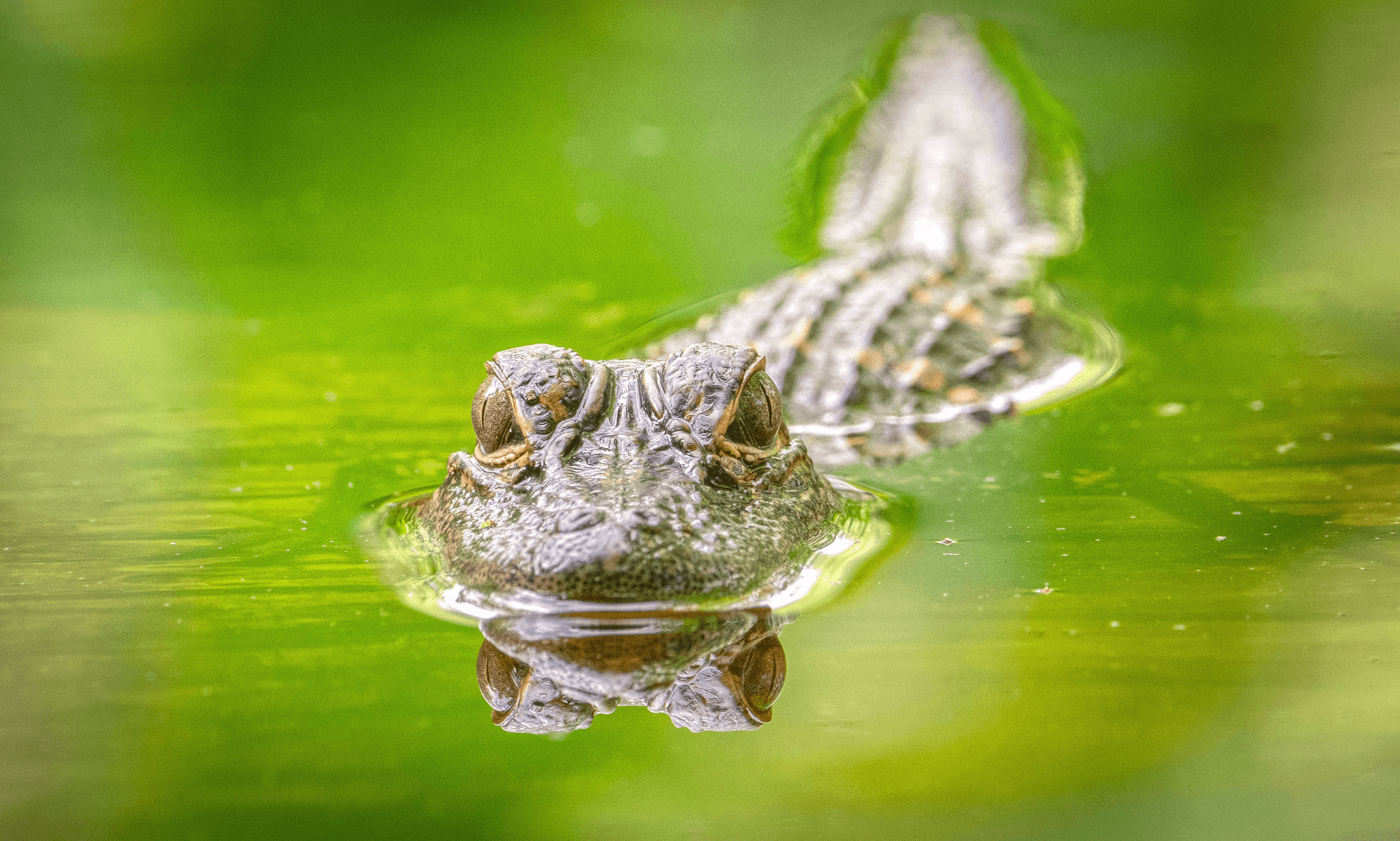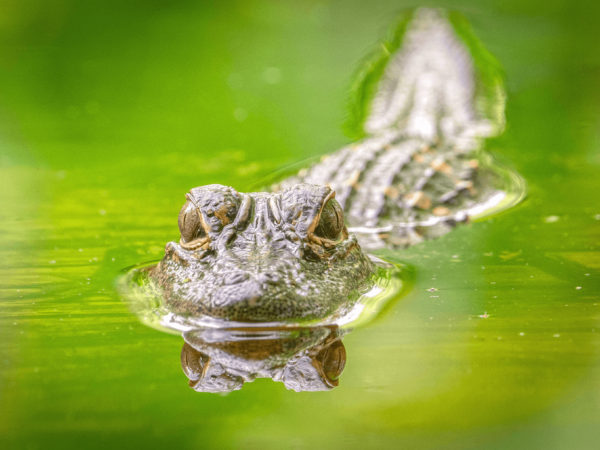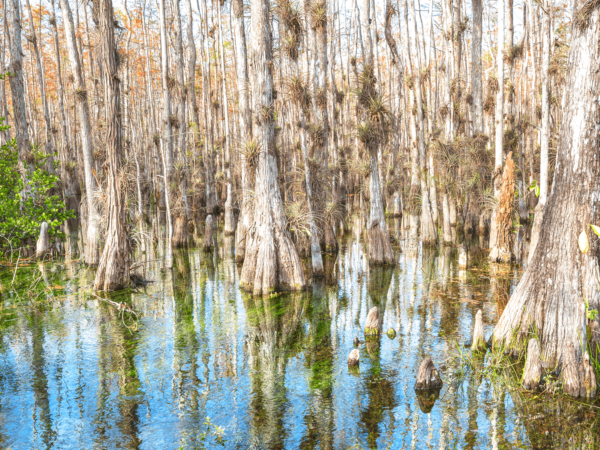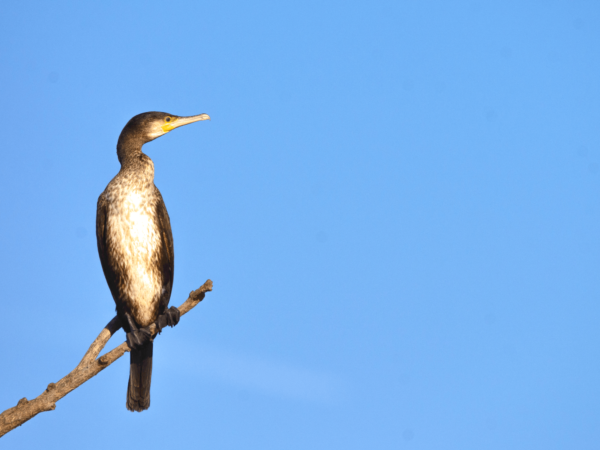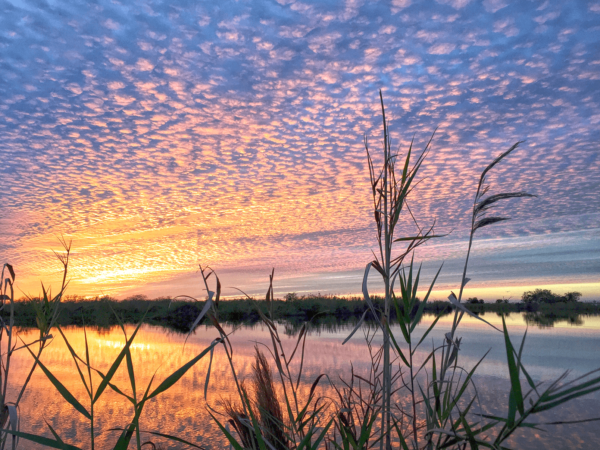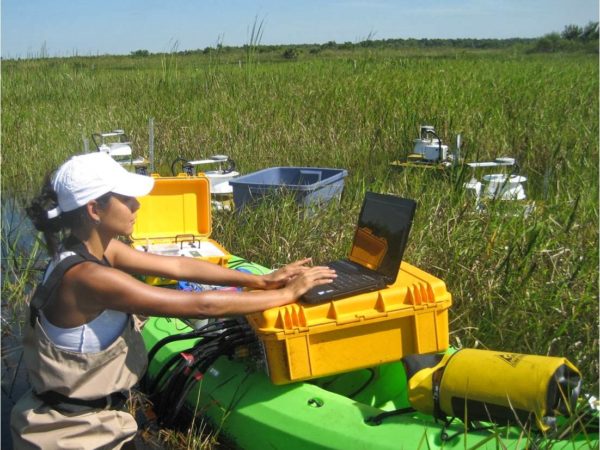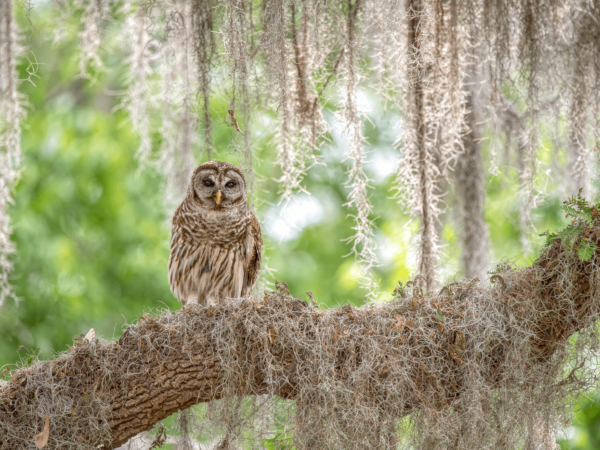Reptiles and amphibians are “ectothermic” or “cold-blooded” meaning they cannot regulate their own body temperatures. Ectothermic animals depend on sunlight to become warm and active, but if they get too hot, they must find shade, a burrow or water in order to cool down. Amphibians and reptiles all have backbones, so they are called vertebrates.
Amphibians include frogs, toads and salamanders. Amphibian means “both lives.” These animals live part of their lives in water and part on land. Amphibians usually have soft, moist skin that is protected by a thin slippery layer of mucus. They are unique because they can breathe through their skin which makes them great environmental indicators of our ecosystem health. Amphibians go through metamorphosis. Young amphibians hatch from eggs, but do not look like their parents. As they develop, their body shape gradually changes from larvae, or tadpole, to adult. Seventeen amphibian species have been recorded on the Refuge.
Frogs on the Refuge may be heard; but are very rarely seen. Pig frogs are the larger of our two common species and have a loud grunt that some say sounds like a pig. Cricket frogs are tiny and sound like a cricket or two marbles clicking together.
Reptiles found in Florida include turtles and tortoises, lizards and snakes, and crocodiles and alligators. Many reptiles spend most of their time on land, but some spend a great deal of time in the water. All reptiles are covered in scales and can either lay eggs or have live birth. Reptiles can be found in all types of habitat except polar ice and tundra. Lizards are the largest group of reptiles in the world. At the Refuge, we have approximately ten species of turtles, eight species of lizards, 24 species of snakes and the American alligator. Turtles are among the reptiles that you may see more frequently than others. Red-bellied turtles eat plants while Cooters eat small invertebrates; and both can often be seen basking in the sun. Softshell turtles have large webbed feet which allow them to swim very fast. They can be spotted in the water with their long snouts sticking up.
Snakes make up the largest group of reptiles on the refuge; they include both venomous and non-venomous species. Among the commonly seen species of snakes on the refuge are the cottonmouth, black racer and rat snakes. The American alligator is the reptile that everyone wants to see when they come to the Refuge. Winter is the best time to see alligators because they have to bask in the sun, out of water, to raise their body temperatures. Spring is also good since both male and female alligators are bellowing; preparing for mating season.


